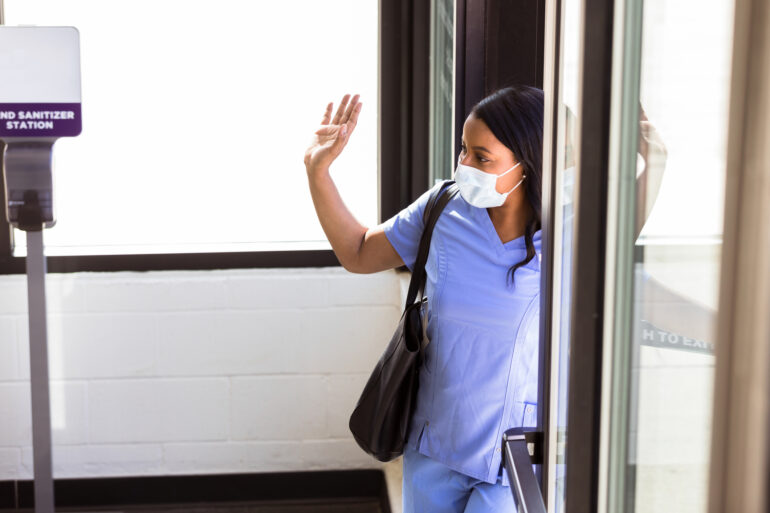Sending nursing staff home who are mildly ill with COVID-19 could lead to unnecessary patient hospitalizations, deaths, and costs, according to a study published in JAMA Network Open.
When nursing home staff who test positive for COVID-19 are sent home, this can worsen an already present understaffing problem, resulting in even more missed resident care tasks, resident hospitalizations and deaths, and costs, according to the study’s authors.
The computer simulation modeling study was conducted by researchers at the Public Health Informatics, Computational, and Operations Research (PHICOR) at CUNY SPH, the Center for Transformative Geriatric Research at Johns Hopkins University School of Medicine, the California Association of Long Term Care Medicine, and the Division of Infectious Diseases at the University of California, Irvine.
Many nursing homes are currently understaffed. A previous study found that 94% of U.S. nursing homes were understaffed in 2021 and 72% of nursing homes had fewer staff in 2024 than pre-pandemic. Some reasons for this understaffing include low employee wages, difficult working conditions, staff turnover and burnout, and lack of minimum staffing standards.
This new modeling study estimated that, in the absence of COVID-19, 22% of resident care tasks were not completed given current staffing levels, with an average of 93.7 of 424 daily resident tasks not completed (34,185 missed care tasks per year).
Annually, these missed tasks caused an average of 38 resident hospitalizations and 4.6 deaths per 100-bed nursing home, costing the Centers for Medicare and Medicaid Services (CMS) an average of $1.07 million.
Throughout the COVID-19 pandemic, the national guidance has been to send staff testing positive for COVID-19 home for up to 10 days (or until testing negative) to reduce virus spread. This study showed that sending staff home worsened understaffing, with 649.5 more missed tasks annually (1.8 more per day), even when some tasks were covered by other staff in the nursing home.
These additional missed tasks caused an average of 4.3 additional hospitalizations and 0.66 deaths due to staff being sent home. Together, COVID-19- and these missed-task-related hospitalizations and deaths cost an additional $247,090. However, the costs due to negative health outcomes from missed care tasks outweighed the costs due to COVID-19 by 4.1–9.3 times.
A possible temporary alternative to sending them home is to instead have only those with mildly ill symptoms work while wearing N95 respirators.
For example, the study showed that when 75% of mildly ill staff worked while wearing N95 respirators, there was an average of 240 fewer missed workdays per year, 475.9 additional tasks completed, and 3.5 fewer missed-task-related hospitalizations and 0.4 fewer deaths compared to when all staff were sent home.
However, there were five more resident COVID-19 cases but no additional COVID-related hospitalizations. Overall, allowing mildly ill staff to work while wearing N95 respirators saved an average of $85,470 annually. These missed-task-related costs consistently outweighed COVID-19 costs when mildly ill staff worked while wearing N95 respirators.
“While our study shows that allowing mildly ill staff to work while wearing N95 respirators alleviates understaffing due to COVID-19 furloughs and reduces unnecessary harm, employees should not be encouraged to work while sick and contagious,” says senior author Bruce Y. Lee, professor at CUNY SPH and executive director at PHICOR.
“We need to find ways to fix the underlying problem of understaffing, such as offering competitive wages.”
More information:
Sarah M. Bartsch et al, Modeling Nursing Home Harms From COVID-19 Staff Furlough Policies, JAMA Network Open (2024). DOI: 10.1001/jamanetworkopen.2024.29613
Provided by
The City University of New York
Citation:
Sending home COVID-positive nursing home staff means worse outcomes for patients, study says (2024, September 25)



